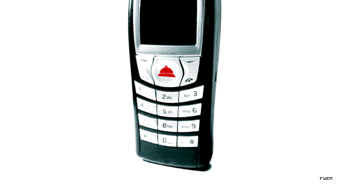22 Nov Servicios de proximidad

© Ruca
English Follows | Chinese Follows
Estamos en Londres. Llueve. No pasa ningún taxi. Pero es obvio que alguno debe andar cerca. Pasan los minutos. No aparece ninguno. No recuerdo el número de un radiotaxi. Cojo mi móvil. Llamo al 08 700 700 700. A hacerlo, el servicio que hay detrás localiza dónde estoy (determina en qué ?célula? de telefonía móvil estoy en ese momento). Después, localiza vía GPS qué taxis están cerca. Y, finalmente, me pone en contacto vía móvil con el conductor del taxi libre que está más cercano (no con la central de radiotaxi, sino con el taxista más cercano en concreto) Lo tomo, me lleva al sitio, y pago, incluso con tarjeta de crédito, y con descuento, si uso una tarjeta especial del servicio. ¿Ciencia ficción? No. Este servicio ya está disponible en Londres desde principios de 2003. Se llama Zingo. Es un servicio de aquéllos que, cuando te lo explican, lo encuentras tan obvio que te preguntas por qué no se le había ocurrido a nadie antes. La respuesta es, quizás, que aunque a alguien se le hubiera ocurrido antes, sólo hoy tenemos la combinación de tecnologías para que pueda funcionar correctamente. Porque detrás de este servicio aparentemente tan trivial, hay un montón de tecnología, en varias capas superpuestas. De las que, por cierto, yo no veo más que la última, la del servicio final. No me importa que en la base esté la electricidad, la telefonía móvil, el GPS, etc.; yo sólo veo, sólo aprecio, que al llamar a un número de teléfono me ponen en contacto con un taxista que acude rápidamente al sitio exacto en el que estoy. Es un servicio de proximidad, que te evita tener que trasladarte: el servicio viene allá dónde estés. Hay más ejemplos. Ya hay ciudades en las que es posible saber, en una parada de autobús, cuánto tardará en llegar el próximo. Con un teléfono móvil llamas a un determinado número, pasas un código que identifica la parada, y recibes la información. En otros casos es aún más sencillo, pues con la cámara incorporada al móvil se toma una fotografía de un código de barras bidimensional (un código de puntos, denominado QR o Quick Response code), se envía este código a una central de información, y el sistema responde con el dato de cuanto tardará en llegar el autobús, basándose en el seguimiento en tiempo real del mismo. Estos códigos muestran, por tanto, un camino interesante de futuro: evitan al usuario tener que teclear la información, porque el código contiene el dato así como la acción a realizar (hacer una llamada, enviar un correo electrónico, abrir una sesión web, etc.)1. Por no hablar de las posibilidades del wireless marketing (ofertas instantáneas que se te hacen a través del móvil cuando entras en un centro comercial) Ver al respecto la innovadora empresa catalana FuturLink. Otro ejemplo es el siguiente: entras en una librería. Ves el libro que buscabas. Dudas si comprarlo por el precio. Tomas una foto con el móvil del código ISBN del mismo. El móvil traduce la foto en el número del código. Lo envía a un sistema que nos responde con el precio de ese libro exactamente en Amazon. Un botón más y ya lo hemos comprado en Internet. Ver al efecto las propuestas de PaperClick, o SemaCode.
———————————– 1. Encontré este ejemplo en una nota comentada en el blog de un español ?geek en Japón?, Héctor García. En su post , señalaba que la palabra más buscada en Google por los japoneses era ?chisu?, mapa. Algo normal en ciudades tan complejas como las japonesas, donde ?una de las cosas más complicadas es moverse sin perderse.? Pues bien, se comenta allí que es frecuente que en una página web aparezca un código 2D. Este código ?lleva? a una imagen con un mapa detallado de la zona. Cuando acercas el teléfono móvil, con un ?code reader? conectado, a la parte de la pantalla del web en la que aparece un código como el anterior, te bajas el mapa al móvil, con lo que puedes ?navegar? por la ciudad hasta llegar al sitio. En el post en cuestión se explica como funciona con más detalle. Así, por tanto, una necesidad evidente de los usuarios japoneses (moverse por la ciudad) les ha hecho ?reinventar? el móvil con un uso práctico.
English
Pinpointing services
We’re in London. It’s raining. There’s not a taxi in sight. But there must be one close by, surely. The minutes tick by. No taxi appears. I can’t remember the number of a cab company So I get out my mobile and call 08700 700 700. The service behind this number pinpoints where I am (by determining which cell my mobile phone is in) and then uses GPS to find a nearby taxi. Finally, it calls the driver of the nearest available taxi (not the switchboard of the cab company, but the driver) on my mobile. The taxi picks me up and takes me to my destination, and I pay, with credit card if I wish – and I get a discount if I use a special card connected to the service. Science fiction? No. This service has been available in London since early 2003. It’s called Zingo. It’s one of those services which, when you hear about them, seem so obvious that you ask yourself why no-one had thought of the idea before. The answer could well be that even if someone had come up with the idea in the past, it’s only now that we’ve got the combination of technologies to make it work. Because behind this apparently simple service there are layers and layers of technology. We, of course, only see the top one – the end service. We’re not interested in all the details behind it all: electricity, mobile-phone technology, GPS, etc.; all we see, all we appreciate, is that we call a phone number which puts us in contact with a taxi driver who soon comes to where we are. It’s a pinpointing service that saves you having to move: the service comes to you. There are other similar examples. In many cities, you can find out how long it is before the next bus arrives at the bus stop . You simply call a number on your mobile phone, enter a code to identify which bus stop you’re at, and you get sent the information. In other cases, it’s even simpler: you take a photo of a two-dimensional barcode (a matrix code or Quick Response Code) with your mobile and send it to a service which then tells you how long it is before the next bus arrives using real-time data. These codes suggest an interesting future path: users don’t have to key in the information, since the code contains both the data and the task to carry out (make a call, send an email, open up a webpage, etc.)1. And I haven’t even mentioned the possibilities offered by wireless marketing (instantaneous offers sent to your mobile when you enter a shopping centre). See the innovative Catalan company FuturLink. The following is another example: you go into a bookshop and you see the book you’re looking for. But the price makes you think twice. So you take a photo of the book’s ISBN code with your mobile. Your mobile turns the photo into a code number and sends it to a system that sends back the price of this book on Amazon. Press one more key and you’ve bought it online. See the ideas from PaperClick, and SemaCode.
———————————– 1. I found this example on the blog of a Spanish «geek en Japan», Héctor García. In his blog post, he said that the word the Japanese search for most on Google is chisu, which means ‘map’. This is not surprising in cities as complicated as Japanese ones, where «one of the most complicated things is getting around without getting lost.» He also added that websites often include a 2D code. This code ‘contains’ a detailed map of the area. When you move a mobile phone equipped with a code reader over the area of the webpage containing one of these codes, the map downloads to your mobile so you can find your way around the city to your destination. In this same post, he explains how it works in more detail. A clear need of Japanese users (finding their way around cities) has therefore led them to reinvent their mobiles phones for a practical purpose.
Chinese
贴近服务
位置伦敦。下雨。一辆出租车都没有。但附近肯定有车。我不记得电话叫出租车的号 码。我拿出手机拨打 08 700 700 700。我告诉服务台我在哪里(他们可以看到我的手机在那一刻属于哪个?区域?)。之后,通过GPS 全球定位系统确定哪辆车最近。最后,服务台直接把我的手机接驳到出租车司机 那里(不是电话出租车中心,而是直接与离我最近的出租车司机对话)。我上车,到达目的地,付钱,而且是信用卡,如果用特别的服务卡,还有打折。是科幻场景 吗? 不是。这种服务2003年初就开始在伦敦启用。叫Zingo. 对于这种服务,你肯定会问为什么以前没人经历过呢?回答是,可能有人经历过,但今 天我们所拥有的多种科技组合让这种服务达到完美。看似普通的服务背后,有着无数顶尖的技术支持。所有过程,我只看到最后一步,也就是最后的服务。而其基础 起点之所在,电,移动电话,全球定位系统等等对我来说都无所谓;我只重视 一点,就是我拨个电话号码,然后就可以直接跟出租车司机通话,他可以马上赶到我所处的位置。这就是贴近服务:你无需移动,服务去找你。 例子有很多。有些城市里,你在某个公共汽车站可以知道多长时间到达下一辆车。只要 用移动电话拨个号码,再输入车站代码,信息就传过来了。有的更简单,用手机上配置的照相机拍下一个条码(被称做QR或者快捷代码),传到某个信息中心,然 后系统会根据当时的追踪时间告诉你汽车到达所需的实际时间。这些代码向我们展示了一个有趣的未来:用户不需要用键盘输入信息,因为代码包含了所有要做的步 骤(打电话,发电子邮件,打开一个网页等)。1 日常生活况且如此,更不用说充满各种可能的无线市场了(当你进入一个商业中心,你可以通过手机得到快捷方便的服务)。2 再举个例子:你身处某个书店,看到一本一直在寻找的书,疑惑着书价是不是太高了。用你的手机把这本书的国际书号拍下来,手机把照片转成数据发送到某个系统,然后系统告诉我们这本书在Amazon网站上的价格。再按一下,我们就已经在网上购得了这本书。3 ———————————– 1. 我从爱克特. 加西亚 (Héctor García) 谈到一个西班牙人 ?搞笑日本?论坛上看到这个例子。在 http://kirai.bitacoras.com/index.php?p=269, 指出在Google上,日本人查找次数最多的是?chisu?, 地图。 在?最困难的事情就是不迷路?的日本城市里,这很正常。于是谈到某个网站上会经常出现2D代码。这个代码?带着? 一个非常详细的所在区域图片。如果你插上手机,并连接?读码器?,网页上就会再次显示这个数码,你把地图下载 到手机上,然后就可以在城市里 ?畅游?,直到到达目的地。
网页上还解释了更详细的运用方法。如此,日本用户(城市里移动一族)这种强烈的需求使手机实用性能得以?更新?。
2. 参考加泰隆尼亚革新公司FuturLink
3. 参考 PaperClick , o SemaCode.



Sorry, the comment form is closed at this time.